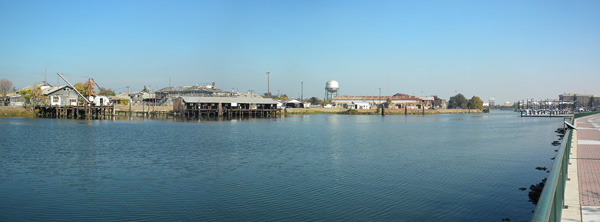9/27/2013
Stockton California
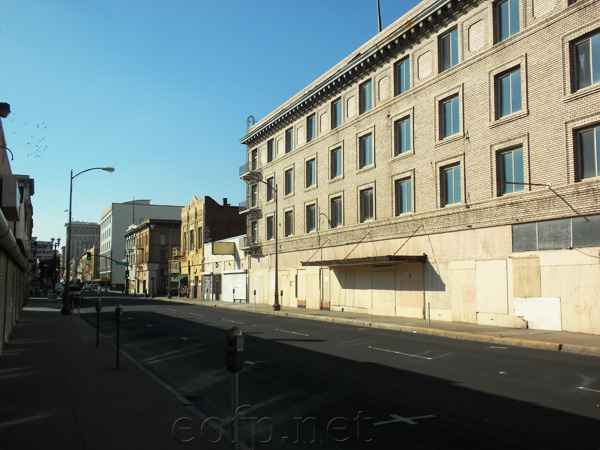
Downtown Stockton California
Stockton was one of the first large cities to develop in California after the 1849 gold rush. Stockton's position on the San Joaquin river at the mouth of the Sacramento delta made it a perfect location to supply and manufacture goods for the gold mines in the Motherlode and the farms that were springing up in the central valleys.
As recently as the 1970s the port of Stockton was lined with factories and warehouses, many of which had been constructed in the 1800s. Today almost all of the historic buildings on the waterfront have been demolished. The city is slowly turning the waterfront into a park with a paved trail and landscaping. When I was there the park was mostly empty. There are sad reminders in the form of photographs on plaques of the busy port that once was. Most of the activity at the Port of Stockton has been moved east of town to the other side of the I-5 bridge.
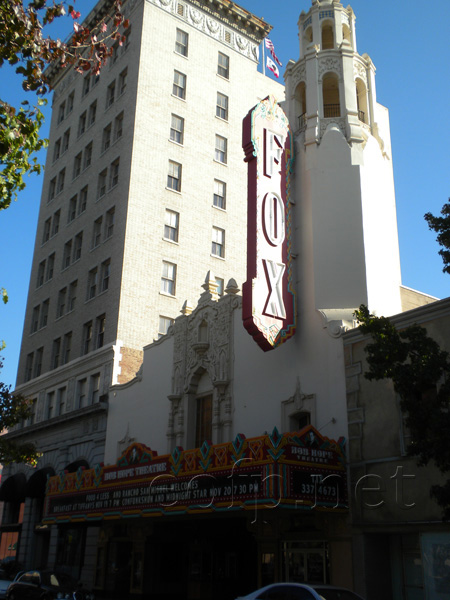
Fox theater in Downtown Stockton
The population of Stockton has grown over the years largely due to aggressive annexations of outlying areas. In addition to the expansion of Stockton's boundaries, suburbs have sprung up north and south of the city. The cheap and easy availability of farmland to develop led to a cheap and ever growing supply of suburban housing and retail space. This encouraged people and businesses to leave the historic core of the city.
With all of the development in the area being steered towards the suburban fringe over the years, it seems like the central part of Stockton was forgotten. In a way this is a very good thing. Stockton and Sacramento have similar histories with the obvious exception of one being the state capitol. Over the years block after block of historic central Sacramento has been raised to make way for hideous modern state office buildings and paved surface parking lots. This didn't happen in Stockton and the result is that the historic commercial and residential core of the city is still largely intact. It's dilapidated, vacant and at risk but still intact.
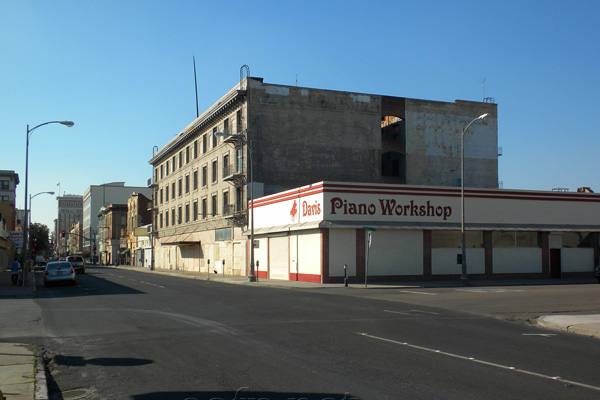
Downtown Stockton
Stockton has the best collection of 19th and turn of the century buildings I've seen in California outside of the San Francisco Bay. Sadly many of them are empty. Stockton also a few remnants of some historically important ethnic enclaves such as Little Manila and Stockton's historic Chinatown. These are remnants of much larger neighborhoods that were demolished to make way for the crosstown freeway in the 1960s. These areas are immediately south of highway 4 (the crosstown freeway) from downtown.
After decades of real estate speculation, easy lending and mindless development at the suburban fringe, the Stockton real estate market was badly over built. In 2006 it crashed hard. Median sale prices for homes in Stockton fell from 397,000 in 2006 to 110,000 in 2009. Stockton led or placed in the top five markets for foreclosures in the US consistently throughout the crash. Construction and services associated with the real estate bubble had become such a large part of the local economy that when the bubble burst the unemployment rate in Stockton shot from 7.8% in 2006 to 22.3% in 2010. Now in 2012 the city of Stockton is on the verge of bankruptcy. After years of desperate cuts in services it seems very likely that the city will default any day now.
Update 2014. Stockton did declare bankruptcy becoming the largest city in the US to do so. Stockton held the distinction of largest bankrupt city until Detroit declared bankruptcy in 2014. Here's an article in Time titled: America’s Most Miserable City Emerges from Bankruptcy about how the city is dealing with the bankruptcy.
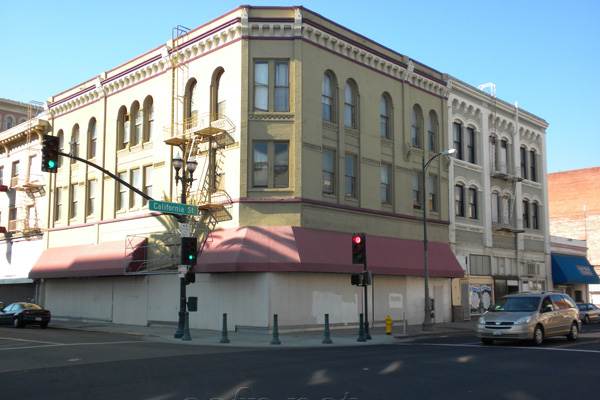
Downtown Stockton
Stockton Harbor Pano (click image to enlarge)
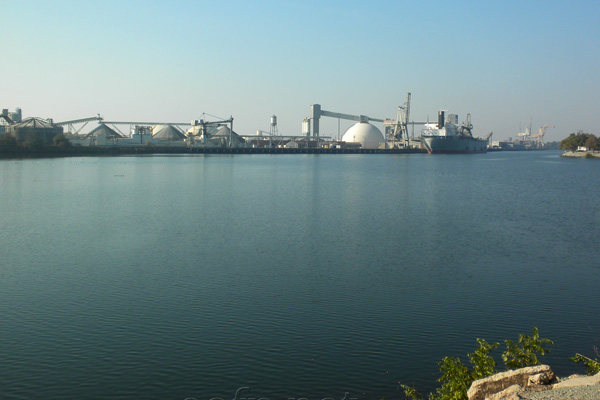
The new Port of Stockton
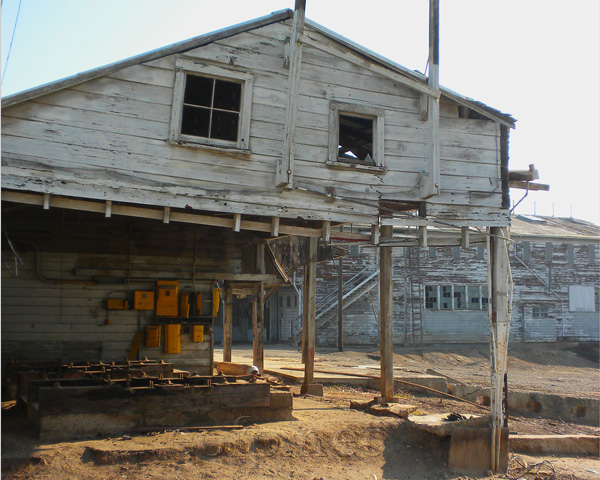
Old Port of Stockton
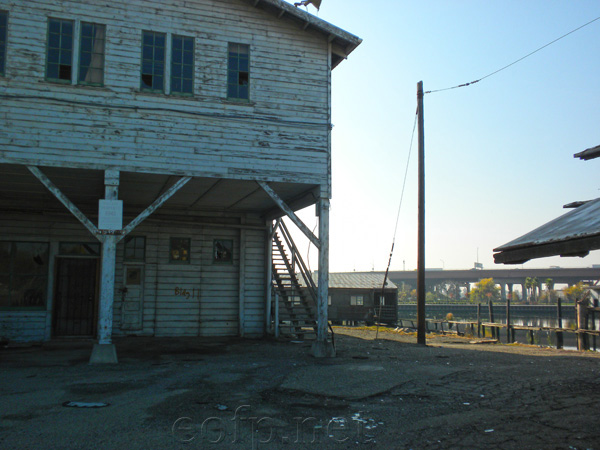
Old Port of Stockton
Downtown Stockton
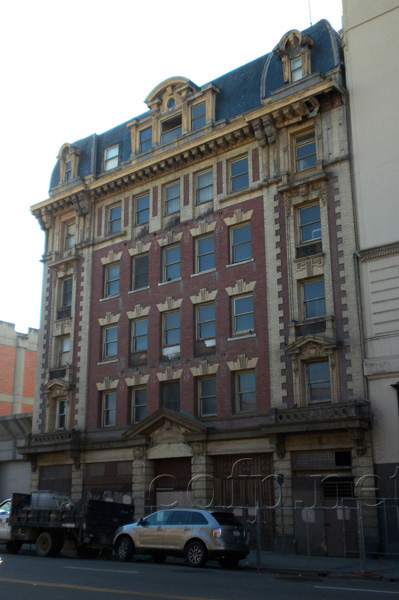
Renovation/preservation in Downtown Stockton
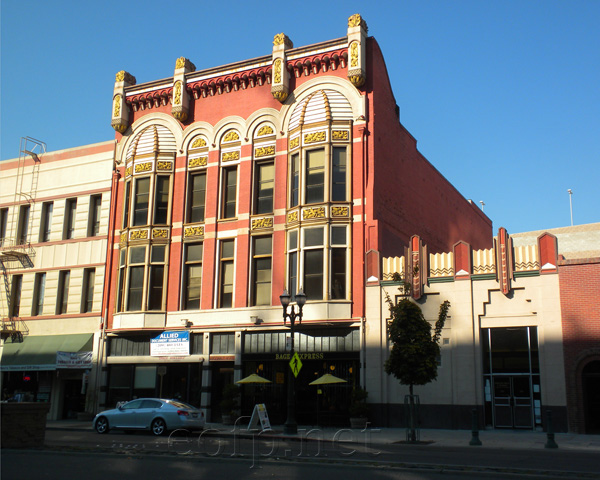
Fantastic Deco in downtown Stockton
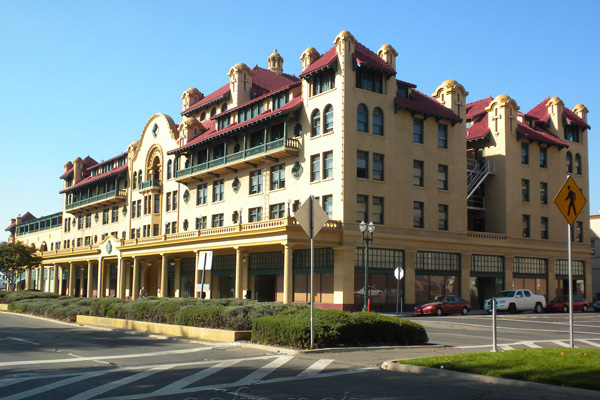
The Stockton Hotel
All content on these pages Copyright Mark Hedlund 2012-2019. All rights reserved. Use in school projects and with links on social media is always okay. Please send me an email to request permission for any other use: hedlunch@yahoo.com Non-exclusive commercial publication rights for most photos is $25 per image.

